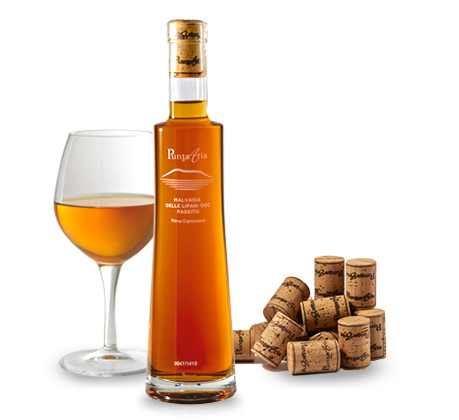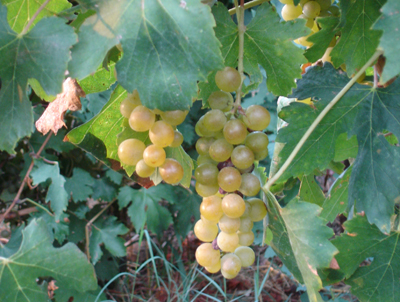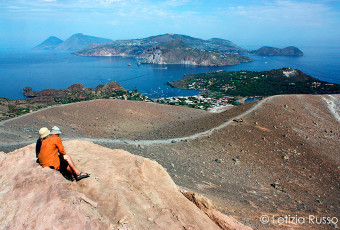Malvasia – The vine of the volcanoes
 “The wine of the volcanoes” (called so by Guy de Maupassant in his work “ Vita errante” , “The Wandering Life”, who was fascinated by its incredible flavours) was defined as the syrup of dense and sweetened sulphur which permeate all the palate (“devil’s vine”). The name comes from a Christian legend dating back to the Muslim domination. According to this legend, a farmer who carried an amphora of Muscat vine, met a government, and prayed God so that it got changed into the mallow (malva) vine. He exclaimed: “Malva sia”. The wine cultivation had its peak during the 19th century thanks to the fleet of a hundred of sailing ships, permitting in this way a better trade. At the beginning of the last century an illness, the Phylloxera destroyed the greatest part of vine varieties causing a collapse of local economy. After some decades of stasis, around the ‘50s, some of winemakers restarted its production, and in 1973 obtained the DOC (Denomination of Controlled Origins) identification. This policy document grants the authenticity of wine, and establishes that the production, more than meal varieties, can be also produced in straw wine and liquor version, and that wine should be produced for the main part from the grapes Malvasia of Lipari. The Malvasia production dates back to the Greeks who , during the 4th century B.C. , introduced the namesake vine variety. There are three types of Malvasia DOC of Lipari: one of table wine, and two of table wine after meal. The first one is compound for 95% of grapes of Malvasia, the rest, which varies between 5 and 8% is of Black Corinto, which gives birth to a prestigious dense wine of amber colour and sweet flavour, defined one of the best dessert wines. The ageing, which lasts from three to eight years, donates to wine a wide range of flavours, such as of broom, a strong taste but at the same time such sweet as that of tamarind.
“The wine of the volcanoes” (called so by Guy de Maupassant in his work “ Vita errante” , “The Wandering Life”, who was fascinated by its incredible flavours) was defined as the syrup of dense and sweetened sulphur which permeate all the palate (“devil’s vine”). The name comes from a Christian legend dating back to the Muslim domination. According to this legend, a farmer who carried an amphora of Muscat vine, met a government, and prayed God so that it got changed into the mallow (malva) vine. He exclaimed: “Malva sia”. The wine cultivation had its peak during the 19th century thanks to the fleet of a hundred of sailing ships, permitting in this way a better trade. At the beginning of the last century an illness, the Phylloxera destroyed the greatest part of vine varieties causing a collapse of local economy. After some decades of stasis, around the ‘50s, some of winemakers restarted its production, and in 1973 obtained the DOC (Denomination of Controlled Origins) identification. This policy document grants the authenticity of wine, and establishes that the production, more than meal varieties, can be also produced in straw wine and liquor version, and that wine should be produced for the main part from the grapes Malvasia of Lipari. The Malvasia production dates back to the Greeks who , during the 4th century B.C. , introduced the namesake vine variety. There are three types of Malvasia DOC of Lipari: one of table wine, and two of table wine after meal. The first one is compound for 95% of grapes of Malvasia, the rest, which varies between 5 and 8% is of Black Corinto, which gives birth to a prestigious dense wine of amber colour and sweet flavour, defined one of the best dessert wines. The ageing, which lasts from three to eight years, donates to wine a wide range of flavours, such as of broom, a strong taste but at the same time such sweet as that of tamarind.
The production of table wine occurs through fermentation of must without solid parts, with the addition of sugar, granting a major final sweetness.
The “straw wine” version is obtained from the same vineyard, but through a different proceedings. The bunches are partially dehydrated upon the plant or upon racks, and later grapes are divided from bunches, in order to avoid that the last ones, by now dried out under the sun, absorb quantities of alcohol and give bad flavours; then they go on with easy pressing. After the phase of fermentation, which naturally stops on reaching a high alcoholic gradation, wine is stabilized for nine months in barrels, and then decanted in bottles. This process gives wine a yellow amber colour, so close to honey, eucalyptus, herbs; it is mellow and tasteful for palates with a slight aftertaste of apricot.
The liquor version has a bouquet reminding apricots and peaches; it is mellow, aromatic and strong. The minimal alcoholic gradation is of 20 degrees. The process of wine-making is close to straw wine, but with the addition of alcohol of wine origin. The bottling occurs after the refining in bottles for a period at about 6 months. The ageing can last even ten years, in order to be later served as table wine after meals. The conservation occurs in specific rooms totally immersed into the dark , in horizontal position where temperatures vary between 10 and 15 degrees, and the humidity around 70-75 %, in order to avoid that the cork dries out. It can be served in little wine glasses at temperature of 16-18 degrees, together with blue cheese, dry pastry, and classic Sicilian pastry, as cassata and cannoli.







